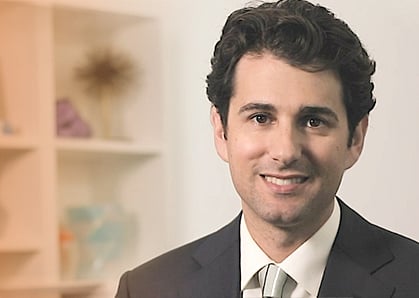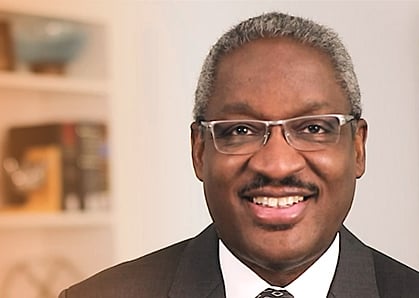Amtrak, P3 Misconceptions, and Future of Passenger Rail
Although routinely outshined by the political controversy of the moment, one of Washington's longest running debates — the future of the National Rail Passenger Corporation, i.e., Amtrak — steadfastly continues.
Formed in 1971 as part of a legislative compromise to stave off the impending extinction of the nation's passenger train industry, Amtrak was never intended to be a permanent solution. At the time, many politicians viewed the death of passenger rail as inevitable and did not at all think of Amtrak as a means to save the industry, but rather as a means to permit it to die with some dignity.
Yet, more than 40 years later, Amtrak lives on, and its operations remain subsidized by federal dollars. This has not been without controversy, however, and there have been repeated calls over the years for an end to the government's continued funding of Amtrak. Just this summer, for example, Rep. John Mica of Florida introduced legislation that would privatize portions of the national passenger rail system.
Although many Amtrak supporters in Congress remain opposed to relinquishing total government control over Amtrak, some do appear to support some private involvement in Amtrak, and former Sen. Frank Lautenberg of New Jersey, one of Amtrak's strongest supporters for decades, recently expressed interest in a public-private partnership to solve Amtrak's financial problems.
To some, Lautenberg's statement may sound puzzling. Isn't Amtrak, after all, a public-private partnership? In fact, although Amtrak is an entity with both public and private elements, it is not a true public-private partnership (also known as a "P3" or "PPP").
A P3 is not created by granting a public subsidy to a private operation. A popular misconception about public-private partnerships is that they are a “gift” of public dollars to a private entity, but a P3 is much closer to the opposite — a private subsidy of a public operation. Instead of using public dollars to cover the costs of a private operation (that, in a nutshell, is Amtrak), a P3 leverages a private entity's technical expertise and access to financing in order to reduce the costs of a public operation.
Although P3s are relatively new to the United States, governments have shown a steep learning curve in adopting the best practices in the industry to minimize risks to the public. This includes relying on outside expert assistance. For example, although we typically represent the private partner in connection with P3s, we are currently serving as outside counsel to Miami-Dade College for its Medical Campus P3 project.
A P3 is also not the same as “privatization” — i.e., the outright conveyance of public assets to the private sector. Mica's proposal to transfer Amtrak corridors to private rail operators falls into this category.
But a public-private partnership, as the name suggests, involves the partnering of the private and public sectors, whereby the government and the private partner share in the risks and rewards of a project. The sale of a public asset, which transfers all of the risks and all of the rewards to the buyer, is not a public-private partnership.
Stepping away from passenger rail for a moment, suppose that "Small City" needs a new city hall. Utilizing the traditional model, Small City hires an architect to design the building and then bids out the construction work.
Small City owns the land and finances the construction of the new city hall by issuing bonds, and at the end of the process, it owns its new city hall, but owes the full cost of construction, plus interest. Further, because the architect and the contractor are not on the hook for each other's work, change orders may be required, and Small City bears the risk of the associated increases in cost and construction times.
Alternatively, a P3 can be used in this context to reduce the construction time, cost and risk to Small City. A P3 is an inherently flexible vehicle, and the possible structures even in this limited, hypothetical application are far too numerous to list.
A possible example, however, is that Small City enters into a partnership with a private developer, and the private partner designs, finances and constructs the new city hall, plus compatible commercial uses on the property. Under this structure, Small City could pay a flat fee for the new city hall and share in the revenues of the commercial development.
Because the developer is in charge of both design and construction, the developer, not the city, internalizes the risk of compatibility issues and increased costs. Further, if the commercial development rights are valuable enough, Small City could potentially pay nothing at all for its city hall.
There are infinite ways to design this partnership, but at the end of the day, both Small City and the private partner share both the risks and the rewards of the project, and Small City acquires its new city hall at a greatly reduced cost, as compared to the traditional model.
A passenger-rail P3 could look a lot like the above example. Although the operation of Amtrak itself may not generate a revenue stream that could be used to secure private financing, etc., that is no different than Small City's city hall, which by itself generates no revenues.
Similar to the above example, however, the train stations could be expanded and developed jointly with a private partner to generate revenues for the benefit of the larger rail operation. Beyond mixed-use development at stations, other examples of transit-related P3s include Florida's Miami-Dade County's current plan to create a P3 to supply natural gas for its buses.
Although public bus service, by itself, may not be profitable, fuel certainly is, and the county can defray the cost of its bus service through the natural-gas P3. Perhaps this model, too, could be adapted and utilized to reduce Amtrak's costs.
The possibilities are endless. One of the greatest benefits of P3s is their flexibility and room for creativity. The government need not determine in advance exactly what the final P3 will look like and can instead permit potential private-sector partners to propose creative structures.
Time will tell, but with the benefit of a properly designed public-private partnership, perhaps Amtrak will prove to be the savior of the passenger rail industry after all.
This article is reprinted with permission from Law360.

